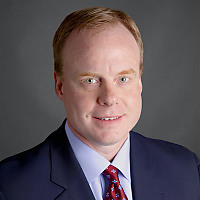Between the global financial crisis through to the coronavirus pandemic, the equilibrium path was deflationary – low inflation created even lower inflation. This was demonstrated in the energy sector as the low cost of capital and technological revolution of fracking led to increased drilling and more oil being sold at lower prices. A cycle of lower inflation and lower rates created a continuous feedback loop of abundance. The dynamic was not isolated to the oil and gas industry. It extended across sectors and economies and created a paradise for growth investing – especially for those investing in duration.
The cycle has shifted, and we now appear on a new equilibrium path. One where we see inflation remain sticky, despite recent falls, and with interest rates being maintained at higher levels for longer. The global financial crisis shocked us onto a lower inflation and lower rate path. Now, the pandemic, fiscal policy response, and supply chain problems have shocked us onto this new path – one that is likely to lead to a continuous feedback loop of scarcity.
Again, we highlight the oil and gas industry, where even though oil prices have risen solidly since the summer 2023 trough, rig counts in the US are falling. Why? Because rising financing costs; labour shortages; higher transportation costs; environmental, social, and governance (ESG) pressures; and industry consolidation have all pushed the oil cost curve meaningfully higher. This requires oil prices to be higher to incentivise companies to accelerate drilling.
These dynamics set the scene for inflation to remain sticky, alongside higher interest rates, until we get shocked off this path. This would require a recession and high unemployment, but that is not predicted in the near term. With the US Federal Reserve unable to create a credit cycle, but also unlikely to aggressively cut rates leading into an election year, we expect higher short‐term rates for longer until the excess liquidity from the pandemic is pulled out of the system.
Implications of a new equilibrium path
Being on a different equilibrium path requires investors to adapt and not rely on past growth investing strategies of buying technology and duration and forgetting about the rest. Instead, investors should consider what is appropriate in an environment that is vastly different from when rates were zero.
This environment, however, will yield new opportunities, but to find those, an investment framework that is malleable enough to readjust is key. Having a broad definition of growth will be crucial to allow the flexibility to focus on different areas of the market where one can identify companies that are providing better earnings growth.
Said another way, you don’t need to be waking up every morning hoping that the Fed will start cutting rates. Instead, it will be important to find insights regardless of industry or geography. The current environment is challenging. Yet, we remain optimistic heading into 2024. The US economy is not broken – people have jobs and consumers are spending, gasoline prices are flat year over year, and we expect earnings will be better than feared. There are still opportunities to find idiosyncratic alpha, and we are being open‐minded about where those opportunities exist. However, we are not looking back to the old path. Instead, we are being mindful that evidence points to a different path. The make-up of the portfolio may change, but nothing will change in terms of our investment framework. We remain focused on buying quality companies, where we have insights about improving economic returns and we do not want to pay too much.
David Eiswert and Nabil Hanano, Global Focused Growth Equity Strategy portfolio managers, T. Rowe Price







